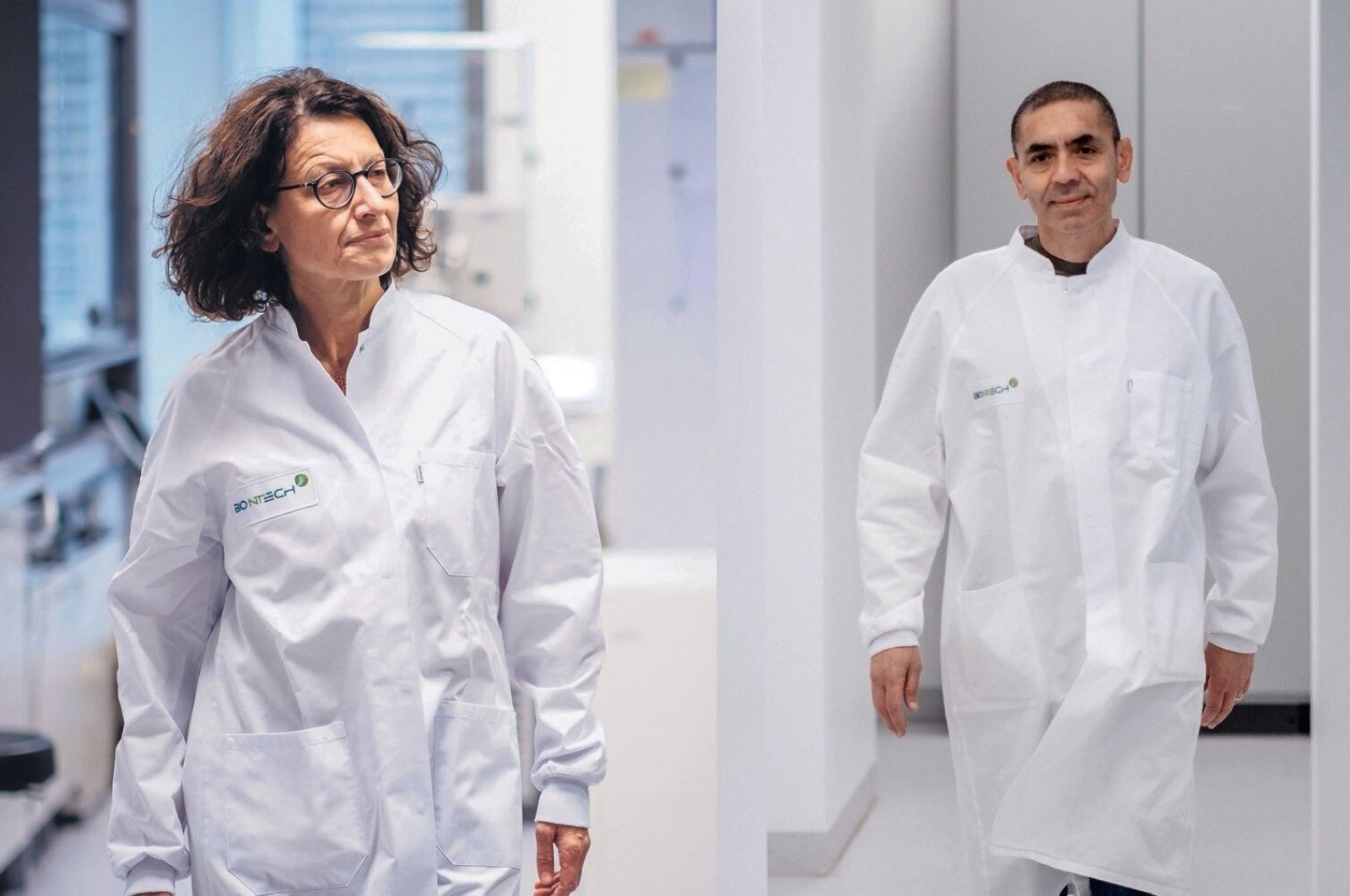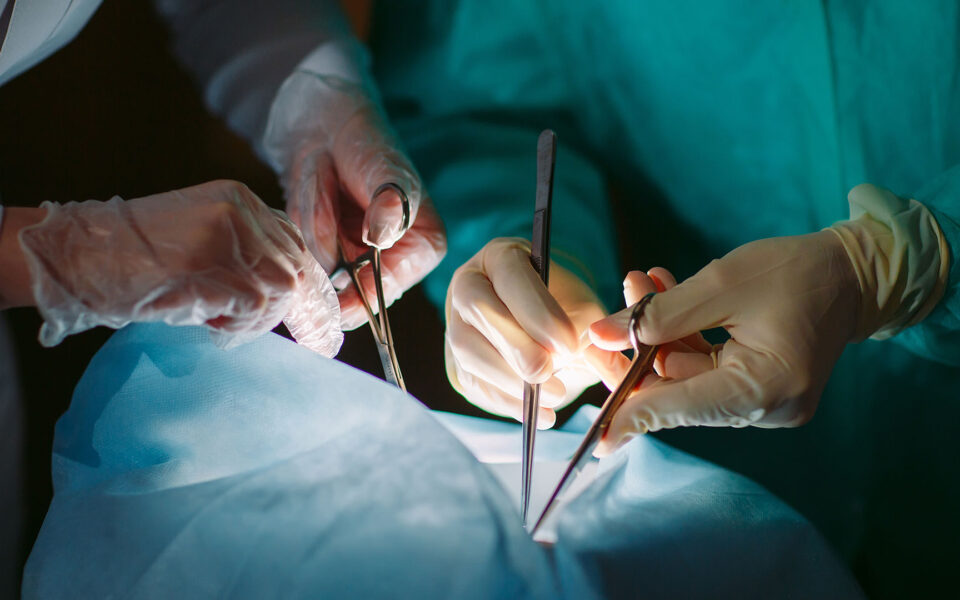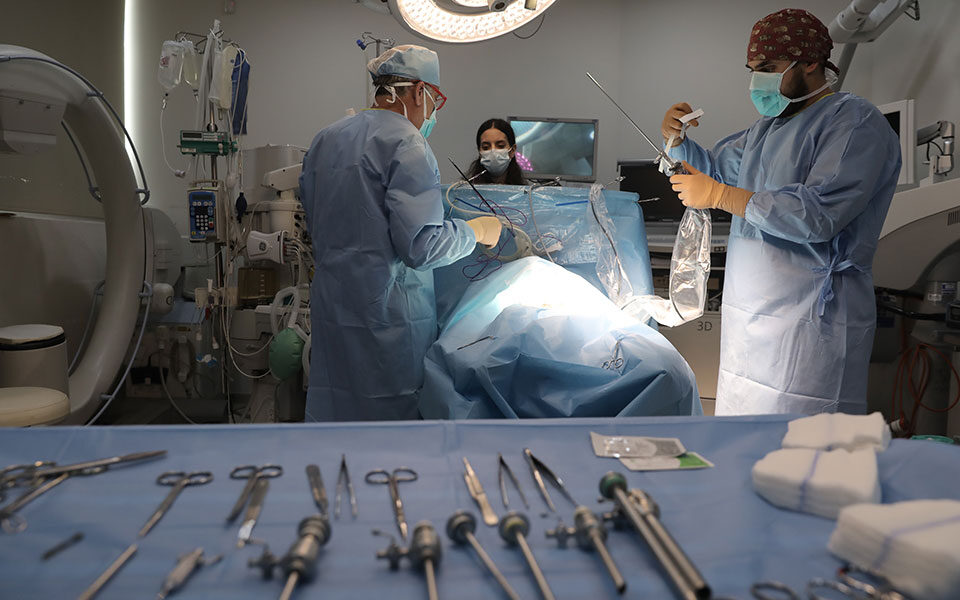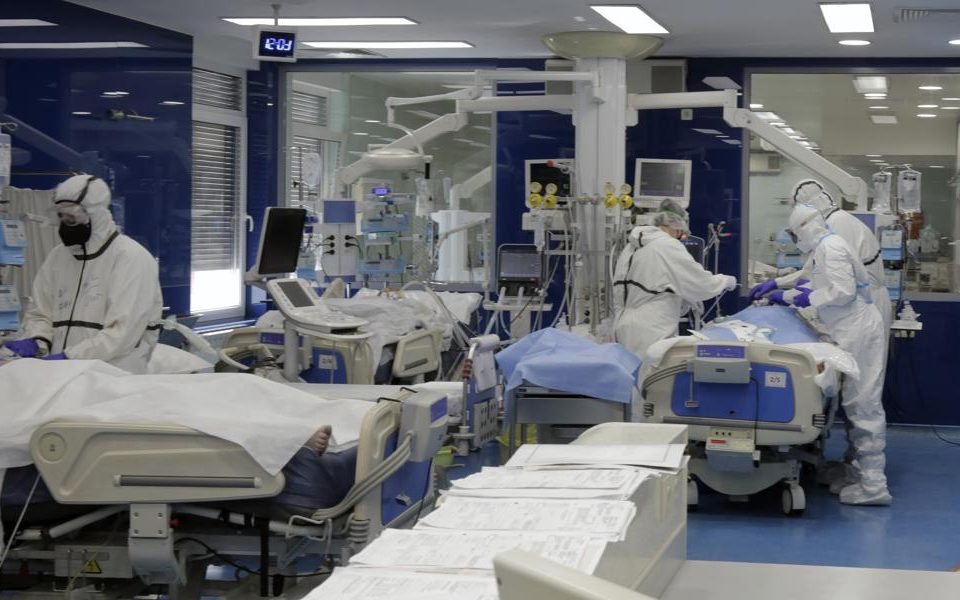Cancer vaccines in two to three years


Drs Ugur Sahin and Ozlem Tureci are a very modest, perhaps even humble, scientist couple. The pandemic catapulted them into the spotlight, giving them a somewhat rock star status – with all the good and bad that this entails these days.
In this interview, the scientists explain how they came to use technology that was originally developed for cancer patients to create the first mRNA vaccine against Covid-19. They speak about their initial contact with Pfizer CEO Albert Bourla and the trust at first sight which made them certain they could work together. They reveal how they were impressed by Angela Merkel’s ability to accurately sum up a 20-minute conversation in a 20-second conclusion.
The two scientists, who are the children of Turkish immigrants to Germany, are optimistic about the future. They believe that the production of vaccines preventing the relapse of cancer patients is a matter of time. Although they understand the attacks on science and scientists over the issue of vaccination, they insist that the number of people who are grateful to science and its key contribution is much larger after the pandemic.
O.T.: It’s an overwhelming feeling. In fact, it’s our first time in Thessaloniki, and it’s a wonderful place with warmhearted people. And the prize itself is an honor for us. We feel blessed. It’s a prize which stands for the person who wanders between worlds to bridge them, who holds science and education high, for the Empress Theophano. And that very much symbolizes what we want to do.
I want to ask you some questions that everybody would like to. Firstly, will the protection provided by the vaccine you have created last more than a year? Is it going to cover the new variants?
U.S.: The Delta variant is the dominant strain at the moment. We know from laboratory experiments that our vaccine also neutralizes this variant. What is important is that antibody titers decline over time and that an additional third injection, a booster, would have to increase antibody titers, and with that, we should have full protection against the Delta variant. How long this protection will last, we have to see. But the antibody titers after the first dose are very high and we are confident that this should be completely sufficient until next spring. Then, we have to look at the antibody titers, and to see if new variants are coming. At the moment, we are very confident that vaccinated people will be safe.
U.S.: We believe so. Without the third dose, infections will continue. We know that with only the second dose, the rate of severe infection is very low. And so the second dose protects against severe disease, but only the third dose ensures that there are no infections. And we believe that avoiding infections could be really useful to control this pandemic.
One of the big questions in people’s minds is about the safety of the vaccine. Is it going to create any kind of problems five, 10 years down the road? Changing people’s DNA and so on? What’s your response to that?
O.T.: This technology, mRNA, does not change the cells of the genome, because it is injected, it does a job and induces an immune response and is gone within a couple of days to two weeks. So there is nothing which changes anything in the body. The safety profile, the type of side effects are very well defined in our clinical trials. More than 40,000 people were vaccinated. In the meantime, hundreds of millions of people are vaccinated and the safety data from this huge number of people is being collected so that the safety profile is well defined. It’s mostly after the injections themselves within the first couple of days that we see flu-like symptoms like headache and fatigue, chills, and then they are gone because the mRNA is also gone. And the potential longer side effects are being monitored by regulators, not only by us. And so far, there are no reports of severe frequent side effects.
U.S.: And generally speaking, this type of vaccine is not different from other types of vaccines, and vaccines are among the safest medicines. We are vaccinated already as kids and have so much experience with vaccines. Of course, every drug has its side effects, obviously. This will not be different for mRNA vaccines as compared to any other vaccine.
There are a lot of people who refuse to be vaccinated. What do you say to them?
O.T.: It’s not for us to say anything. The reasons why people don’t want to get vaccinated are manifold so you cannot answer each and every question. Our job is to make sure that data is generated, which helps people to understand and gauge what vaccination means, what this vaccine means and what it also means not to get vaccinated for the broader population. And we are doing our job by conducting clinical trials, producing data and informing people.
Do you feel that people have lost faith in science in some way?
U.S.: Not really. I think we live in a time where there’s a lot of information, but there’s also a lot of misinformation. And we need some sort of a continued education of society, on how to identify relevant information. And if someone does not want to be vaccinated, we should listen, we should ask the question and try to understand the reasons and even engage into this discussion and help more and more people understand the real situation, and we need this type of openness to listen and to continue this debate. It is required that we can stay together as a society and avoid having groups who either want to be vaccinated or who are completely against vaccination. So continued discussion will be very useful for that.
What was it like to go from a lab to this worldwide exposure?
O.T.: It is part of our job and therefore it was natural. We are entrepreneurs and therefore we’re used to being exposed because we have to defend our science and our clinical development and explain to people, to investors, for example, so, there was some exposure before. The scale obviously is much bigger, we see it as part of our job to explain what we are doing, to explain the data, to educate the society around us. So it was not such a big difference for us.
U.S.: No, it wasn’t. As a scientist, you go to seminars, you have these huge presentations. The only thing that changed is the audience. We are not talking to scientists now. We are talking to the media people. And what I really like is how the quality of people working for the media improved over time so that we can really talk about science, and people are informed about mRNA. So, say, in Germany, there are now more people who understand mRNA than people who understand soccer. Which is good. I think this awareness about science can make a difference and is important for society, because we have so many challenges posed outside of Covid-19, and we feel that despite all these debates, there’s a growing confidence that science is really important, and the work of scientists is appreciated. And therefore it feels good. So we feel that this is part of our mission and therefore it’s OK.
But was there a sort of a defining moment? I always remember that story that you came back from your wedding to go to the lab to check something and then all of a sudden you had to deal with all this publicity, right?
U.S.: Yes. When we were in contact with this intense media, we just talked about how we should deal with that. And we said, “Let’s really keep the private part as minimal as possible.” Unfortunately, this wedding incident was already known. But we tried to keep the private part minimal and just answer the questions which were related to the life of scientists in general. And we also said: “Let’s be as transparent as possible. If we don’t know the information, it’s we don’t know yet.” And that’s what scientists do. They always say: this is known, this is not known, and this is what we are going to do to understand it. And with this compass, in this coordinate system, it gives us the opportunity to behave as authentic as we are. So we are not different in our private lives than what we are when we talk to the media.
Even though you have to talk to prime ministers and the pope and everybody else, this is different, I assume, from before.
U.S.: Yes, it is different. And it’s great to have the opportunity to get all this interesting, outstanding people know about it.
How did you meet Pfizer CEO Albert Bourla? How difficult was the decision to do this joint project?
U.S.: Before knowing Albert Bourla, we had a collaboration with the head of Vaccine Research and Development at Pfizer, Kathrin Jansen, who is German. And then she told me that Bourla would call me. It was a Sunday. So we had a conversation and it was really great. It was a Zoom conversation and we saw all of one of the largest pharmaceutical companies. But from the very beginning, it was a very direct understanding. So he was absolutely pragmatic and I could very tightly feel him. And we had a few minutes’ discussion and we came directly to the relevant parts and we said: “Yes, we want to work together and let us work together, not like a large company and a small company, let us really work together with the voice of science.” And this was great. It was trust from the very first minute.
Was it a race against time to make sure the vaccine was produced in time?
O.T.: It was indeed a race against time when Ugur, at the end of January last year, came up with this epiphany that we actually already were in a pandemic. He had two scenarios: One was that within a couple of months, even before summer, the pandemic would ramp up so fast that we would lose a substantial fraction of world population. That was the really scary scenario. Αnd then the other with a slower ramping up, which was actually the one that came true. And when we understood that every day would count, it was absolutely clear that time did matter and we needed to work basically round the clock. And this was also the reason why he actually called the project “Project Light Speed,” to make clear to everyone that we had to be as fast as light. And our entire team at our company and also the team of Pfizer, and later on, also other partners we brought into the game saw it the same way, so that many people, for this vaccine, worked day and night and at weekends and without vacations. It was a very intense experience for everyone.
Υou talked about the moment of epiphany. Was there one moment when you said, “This is it, we have the solution, we’re going to do it.” Do you remember that moment?
U.S.: It was on a Saturday. Αfter I read an article on Friday. On Saturday, we discussed what the consequences would be. And we knew at that point that this pandemic was going to happen. And we knew that we had a technology which could provide very fast vaccine candidates. Of course, we didn’t know if these vaccines were going to work. But at that moment, knowing that we had a potential solution in our hands, which could be useful, it made it very clear that this was a responsibility, we had to act. So the decision was made on Saturday and, of course, we had to convince all of our colleagues. So on Monday, we went to the labs and convinced our lab workers. On Tuesday, we had a board meeting and, of course, our colleagues said: “Hey, do you really believe that this is going to become a pandemic? This didn’t happen so far and we had conversations with other people and they don’t believe that.” But within two hours of discussion, everyone was convinced. And so we were determined to go and create a vaccine candidate.
What was this technology supposed to be focusing on before that?
O.T.: We originally developed this technology for cancer patients to treat cancer with a vaccine. So it was meant from the very beginning to work as a vaccine. We started actually with working on mRNA technology in the late 90s, and by 2012, we started to treat cancer patients with this mRNA vaccine. Cancer vaccines are not about preventing something, as in the case of a virus. These patients already have large masses partially of cancer, and the vaccine has to be very potent to activate the immune system precisely but also potently, to shrink these masses of cancer. And so, we invested a lot in making a very potent vaccine to stimulate high-precision immune responses. And this was, we think, the reason that we were so successful with the Covid-19 vaccine, because the developed technology is much stronger.
So is there going to be a vaccine for cancer or a treatment for cancer, and, if so, when?
U.S.: We believe that there will be a treatment, vaccines against cancer. So we have been working on this technology with the stem cells for more than 20 years. We generated data in the meantime which indicate that the technology in principle works. Already four years ago we published that we had seen activity, for example, in clinical trials in melanoma patients. And now we have started trials with hundreds of patients and we will get the readout from these trials in the next year and in 2023. If they are positive, then these trials could decide that in two, three, four years, we might get the first cancer vaccines approved. And so we are confident that vaccines could change the fate of cancer patients, particularly of cancer patients after surgery. After surgery, in many tumors, about 30 percent, 40 percent of patients, within the two or three years, relapse. And that is one of the key problems in cancer. Patients seemed to be cured, and after two or three years, there is a metastasis and relapse. And what we want to accomplish with cancer vaccines is to inhibit that, to prevent relapses in cancer patients. These are trials which are ongoing and we will see.
So you’re optimistic that within the next two or three years we’ll have some results from this.
U.S.: Yes, absolutely.
Finally, I want to ask you when you think this nightmare, the pandemic, will be over, and do you think we’re going to be better prepared to address the next pandemic?
O.T.: What does that mean, when is it over? We will live with this virus for quite some time. It will become like a new normality so that we can we get used to it, and the scary phase of the virus will not remain. We will probably enter into a situation, as we have with the flu, that at some point we will have vaccines, we will have protection also over a longer time so that we can live with it. With regard to preparedness for such situations, we need to be prepared because this will not be the last pandemic with high morbidity our world has faced. We have to expect further pandemics of similar scale. When? We don’t know but they will come, as is pretty sure. We think, and this is what we feel, that all stakeholders you need for pandemic preparedness are alerted now and have learned and are working together, so there are a lot of activities to make us learn from this situation now, from this experience, and to be prepared on all levels, so we think that we will be better prepared next time.
I would like to ask you a personal question. All these attacks on science, on the vaccines and everything else. You seem like very calm, disciplined people. Does it ever get to you? Does it ever make you angry?
O.T.: No, actually, we see the other side of the matter. There is also a celebration of science, a lot of it. More than was the case in the past. And this is what excites us and encourages us, because this educates all of us, that there are many other challenges for mankind, which we could also address by science. So we see more of the positive part.
U.S.: And on a personal note, my father always said, “What people say about you says more about the people than about you.” And I think that’s something that we have to accept and look really to the sunny side of things. There, we learn that there are a lot of people who want to contribute and who are really paid for science to find a solution.
I think I’ll take your father’s advice. Thank you very much.
Vaccination rate
Now, one thing I find astonishing is that there’s a huge part of the globe which is still unvaccinated. I wonder how you feel about that. You’re the makers of the vaccine. How do you feel about it and what can be done to address it?
O.T.: When we started this program last year, it was very clear we wanted to contribute and that everyone who wants and needs a vaccine gets it, and that’s the mission. And yes, parts of the globe are not vaccinated because there are not sufficient vaccines there yet. And that means for us that the marathon is not over and we have basically turned every stone, together with our friends from Pfizer, in order to upscale production, in an unexpected way actually, such that we can deliver as much as we can. Three billion doses already this year – that’s quite something. And every peer company which joins in to contributing a vaccine by approving the vaccine is better for us and the world, because, as you said, the goal has to be to vaccinate everyone. And we think that it actually works well, upscaling and delivering to as many people as possible.
U.S.: It is really important to stress that already this year, about 1.2 billion doses from what we produce will go to low- and middle-income countries, and next year, we will be able to produce up to 4-4.5 billion doses. And I assume a large proportion of that will also go to low-income countries. So I’m optimistic that already in 2022 we could have an outreach of our vaccines to almost everywhere on the planet. And if we go back historically, and every time a new vaccine was developed, it usually took five, 10 years until the whole globe was supplied with it. This time, it could happen in two years.
Source: ekathimerini.com




